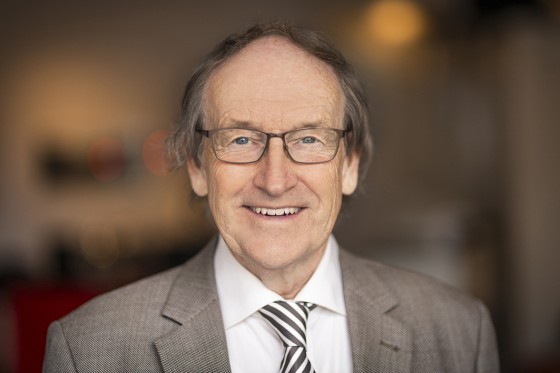
Evolution: in a dialogue with theology
Prejudices regarding a supposed conflict between the theory of evolution and the theological understanding of creation remain stubborn. In Germany and continental Europe these prejudices are based on the dissemination of the theory of evolution by the zoologist Ernst Haeckel (1834–1919). He stretched Charles Darwin’s theory of evolution, turning it into a materialistic and atheistic ideology. The British natural scientist Darwin, who occasionally described himself as a theist – in other words, he did not rule out a divine order behind the universe – rejected his theory being stretched in such a way. In fact, the theory offers a range of approaches for a dialogue with theology.
In Anglo-Saxon territory, this dialogue took place from the very beginning. After all, both the story of creation in the Bible and the church fathers of the first centuries had already pointed out the creative process of development at work. Genesis 1,11f. reads: “And God said, Let the earth bring forth grass and herb […]. And the earth brought forth grass and herb.” Subsequently follow comparable passages on the emergence of animals from the water and the land, with the creativity involved simultaneously being attributed to God’s hand: “And God made the animals […].” (Genesis 1,25).

There is, therefore, no contradiction between the creative actions of God and the mediation through other creatures. One of the church fathers, Gregory of Nyssa (ca. 331–395) spoke of a germinal force of life imparted to creation – a force from whose beginnings emerged the individual dimensions and wonderful things. Augustine (354–430) compared the world to a seed in which everything is predisposed. And the philosopher and theologian Nicholas of Cusa (1401–1464) emphasised that the triune God equipped the world with a creativity which allowed everything to evolve. The sequence of cosmological, biological, cultural and religious processes contained in the story of the creation (Genesis 1,1–2,4a) also corresponds to the insights contained in the theory of evolution.
Moreover, the dynamic associated with the theory of evolution – the dynamic which is part of the cosmic dynamic from the beginning, the processual development and the endpoint of the cosmos – is compatible with the dynamics of the salvation-historical actions of the Father, the Son and the Holy Spirit. The triune God, seen as the perfect communion of love (1 John 4,8.16), provides for nature and humans to share of his love in creation, salvation and consummation – this he will carry through even though humans turn away from him. The special nature of humans, who are a part of nature and to whom God has assigned a special creativity and responsibility through personal awareness and language, also emerges in the continuous further development of the theory of evolution. As a result of the exceptional dimensions of their minds and their awareness, humans can face evolution in such a way that evolution faces itself in humans.
Humans are able to transcend nature and to point beyond it. With the concomitant questions relating to the meaning of life and its ultimate goal, as well as with the self-transcendence which humans can themselves experience, religion also becomes a question posed by evolution itself. In humans, destined for a personal communion with God, an openness to God has ultimately become part of creation as a dimension which can be experienced and which gives orientation. At the same time, humans bear a special responsibility through being an integral part of nature’s processes: From the biblical viewpoint, humans’ behaviour can corrupt all of creation. According to today’s understanding of evolutionary theory and physics, the natural processes are characterized by their constitutive relationality, that is by their mutual relationships. This reflects the constitutive relationships or relations existing in the triune God (traces of the Creator in the creation).
Epigenetics, for example, demonstrates the fundamental interaction or relationality between genetic information and the entire life context. In contrast to the traditional emphasis in evolutionary biology on the struggle for survival or the selection of the fittest, what comes to light is that harmonious symbiosis, being there for one another, and cooperation are also decisive features of the evolutionary process. In the context of cultural evolution, cooperation pertains especially to the cooperative disposition in humans; in the biblical context, this is represented by charity, for example – which goes beyond cooperation. Because man has violated these dimensions, they still remain imperfect.
The interaction between regularity and spontaneity which can be observed in natural processes is, through reliable structures (regularity) and new opportunities (spontaneity), the prerequisite for the emergence and preservation of life. This reflects the action of the triune God, consummated by God the Father in the Son and the Holy Spirit: The Son of God, through whom and for whom all things were made (John 1,3; Colossians 1,16ff.), embodies the generative principle of the independence of creatures. He is the logos (God’s word) who orders everything and who, as the expression of God’s fidelity, assures us of regularity and order in line with the laws of nature, thus enabling figures of a permanent nature to come into being. In accordance with his essence, the Holy Spirit, who brings about the dynamic communion within the Trinity, outwardly represents the communion with God and the dynamic and spontaneity of natural processes (God’s future actions). In the interaction between reliability and openness, regularity and spontaneity open up the spaces of freedom for the communion between God and humans as well as for the creativity of the creation sustained by God.
Author Dr. Matthias Haudel is Professor of Systematic Theology at the Faculty of Protestant Theology.
The book on the subject (German):
Matthias Haudel: Theologie und Naturwissenschaft. Zur Überwindung von Vorurteilen und zu ganzheitlicher Wirklichkeitserkenntnis. Mit einem Geleitwort zur 2. Auflage von Harald Lesch, Vandenhoeck & Ruprecht/UTB, Göttingen 2021, 2. Aufl. 2023.
This article is from the university newspaper wissen|leben No. 2, 4 April 2024.
